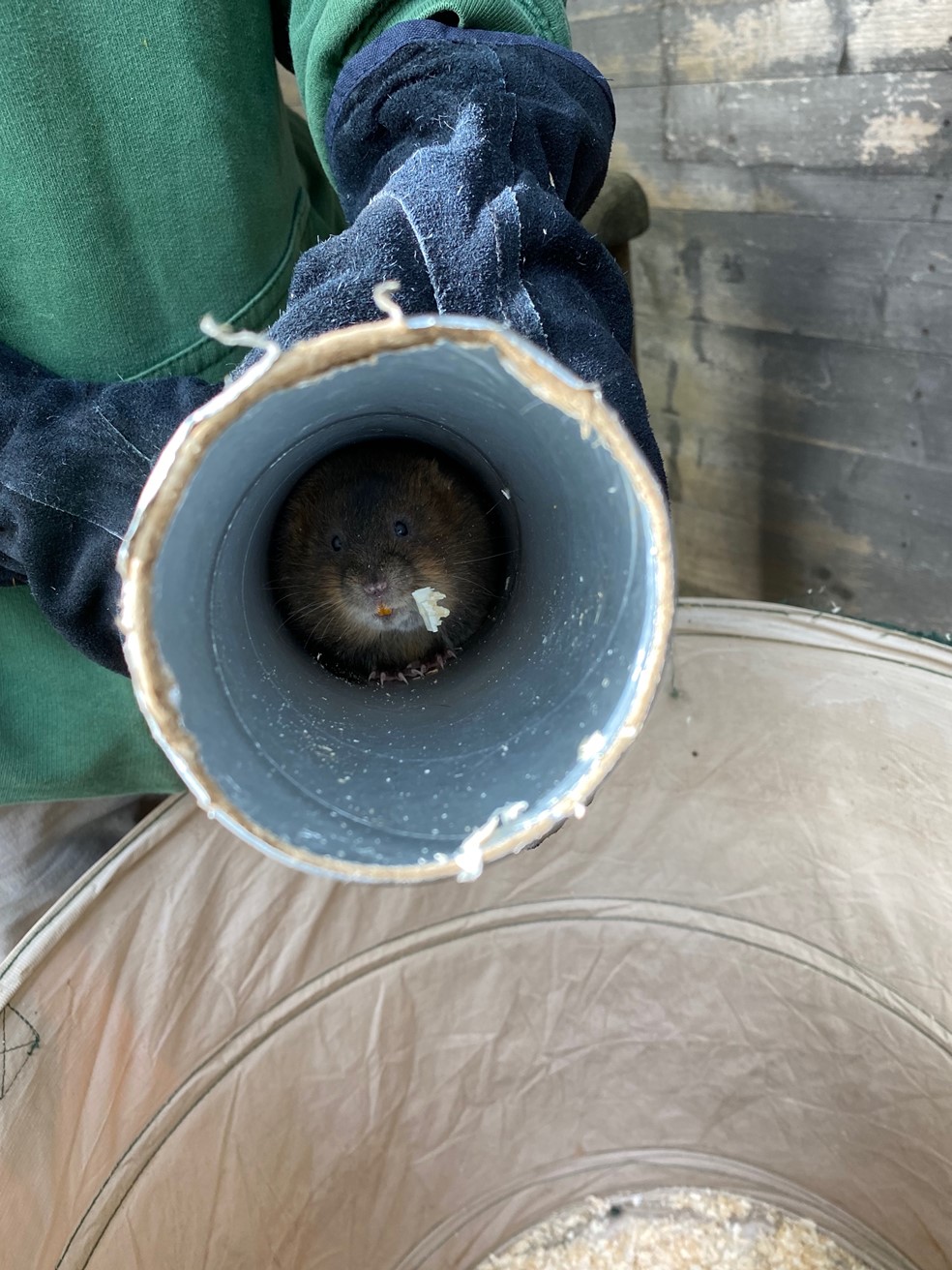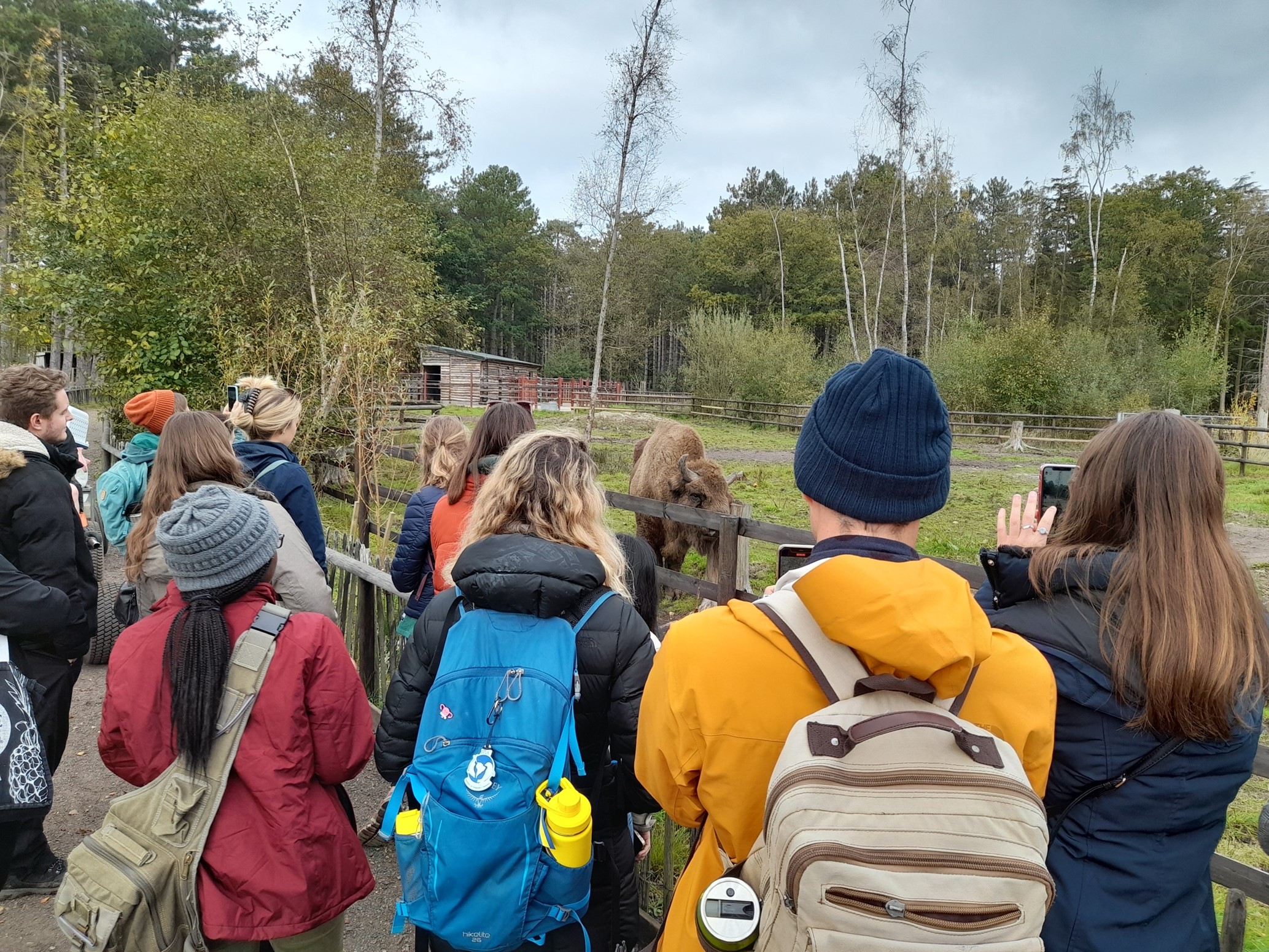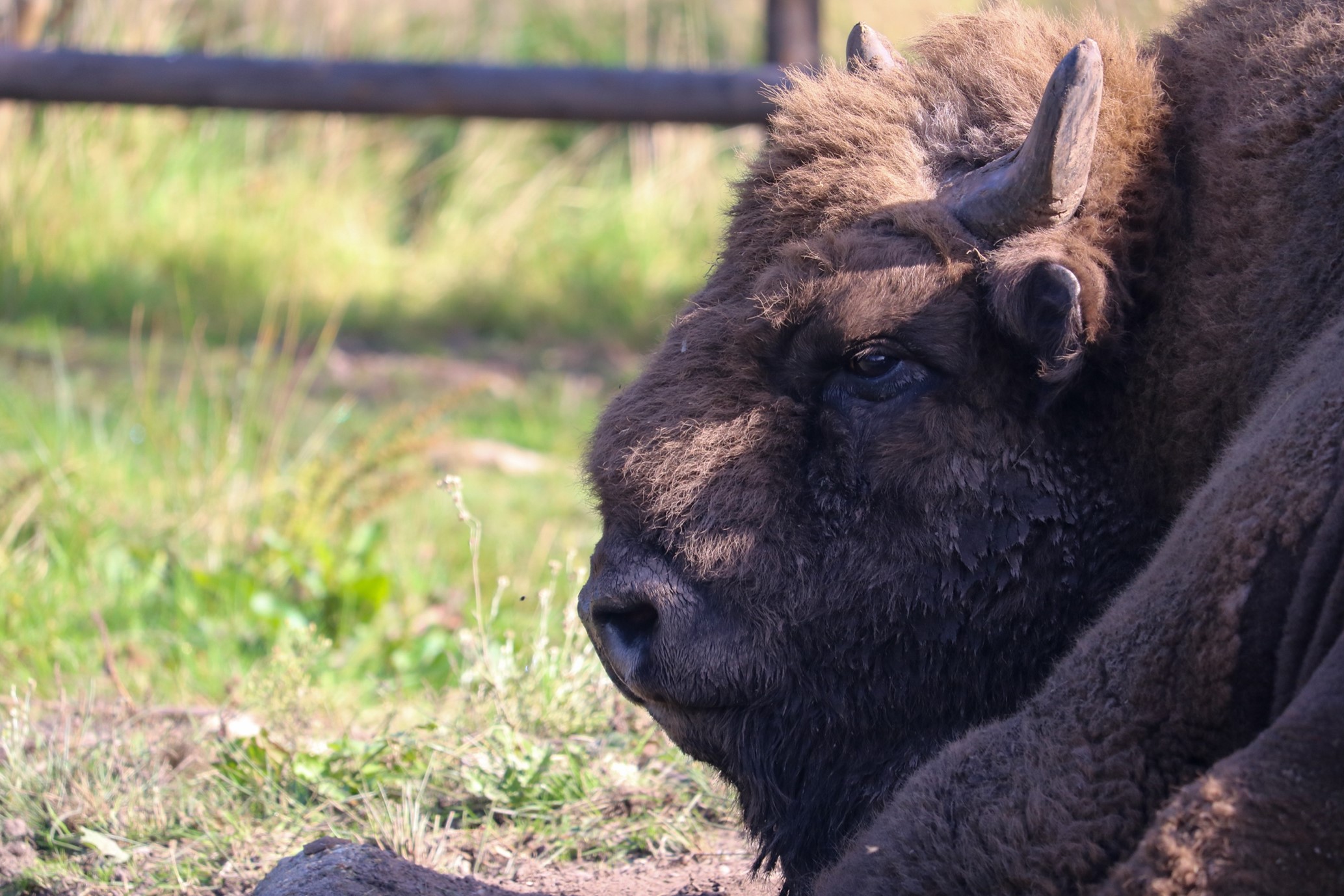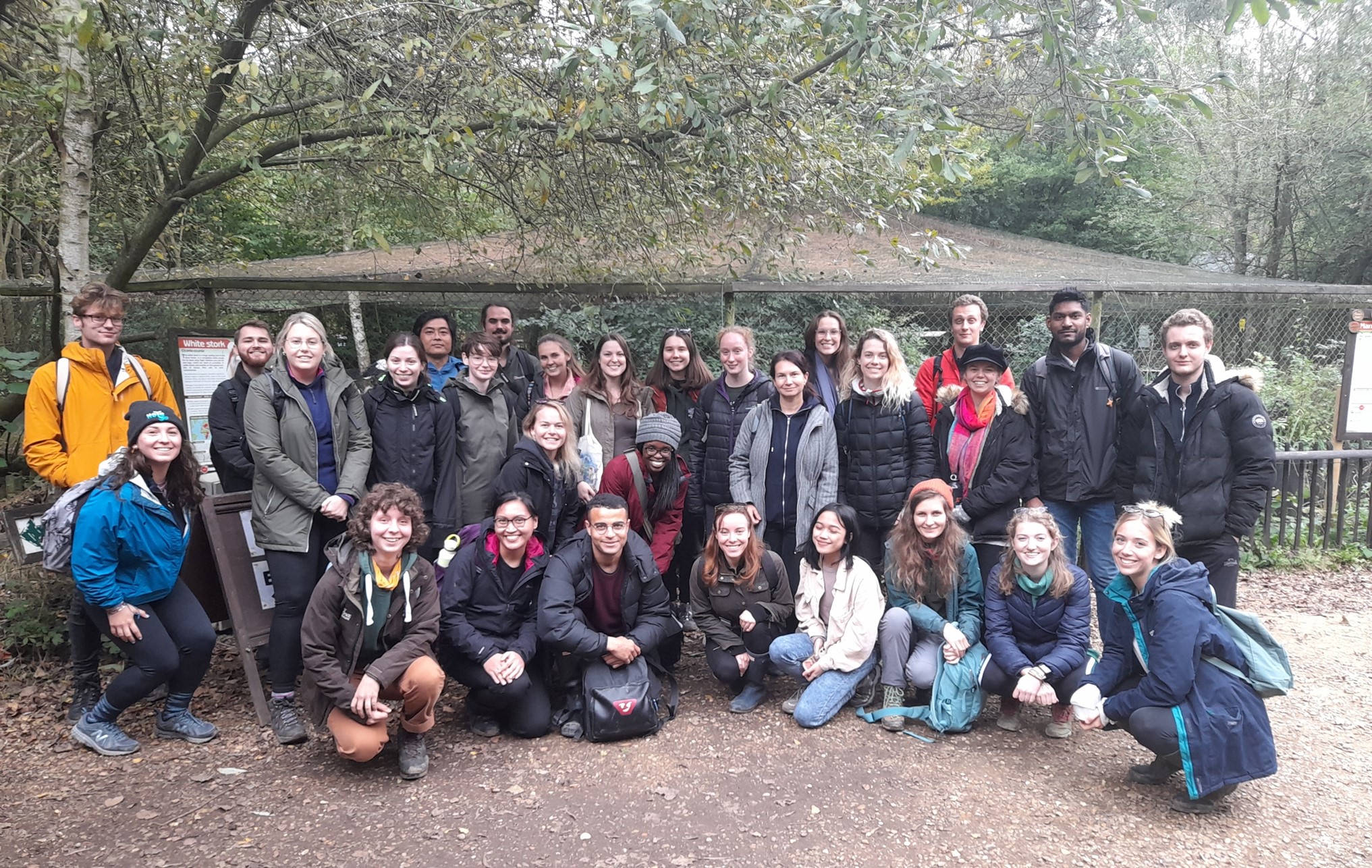On Tuesday 12th October 2021 the Durrell Institute of Conservation and Ecology (DICE) conservation masters students had the opportunity to visit the Wildwood Trust as part of a module concerning the multidisciplinary perspectives on conservation.

The Wildwood Trust is a centre for the conservation of British Wildlife and home to over 200 native animals, both past and present, located in ancient woodland not too far from the University of Kent! Wildwood’s mission seeks to protect, conserve and rewild British wildlife. The trust has therefore taken part in some exceptional conservation programmes to date some of which we got the privilege to learn about first-hand from Wildwood’s keepers, including the water vole (Arvicola amphibius), red squirrels (Sciurus vulgaris), pine martens (Martes martes) and European bison (Bison bonasus) to name a few. We were all also temporarily distracted by one of the cutest species at Wildwood, the Arctic Fox (Vulpes lagopus).
We also had the opportunity to have a tour of Wildwood and learn about some of the species on display including the incredible rescue of the two European brown bears (Ursus arctos arctos), Fluff and Scruff, from a canned hunting facility in Bulgaria. We were also interested to learn about Wildwood’s efforts to successfully breed pine martens and in collaboration with the Kent Wildlife Trust, their conservation efforts to reintroduce the Red-billed chough (Pyrrhocorax pyrrhocorax) back to the Kent coastline. Further discovering that the red-billed chough can be found on the Canterbury City and University of Kent coat of arms. Therefore, we will be lucky enough to have this species printed on our degree certificates!

As mentioned, a key objective of Wildwood’s mission is the rewilding of Britain. One of these projects as part of ‘Wilder Blean’ includes the upcoming and long-awaited arrival of the European bison to Blean woods. Bison are great habitat management animals and their introduction to West Blean woods and subsequent grazing habits will encourage more light to reach the woodland floor and increase the amount of deadwood which is required to benefit the native plants and animals found in the area. Interestingly, however, it was never actually the European bison that roamed the UK thousands of years ago. It was in fact the closest living relative to the species that was originally native to the UK.

Furthermore, the Bison will not be alone in the woods! Wildwood will also be housing the bison with iron age pigs and Exmoor ponies to allow for a range of grazing habits from these three species to help manage the woodland. As well as getting a closer look at the area within which the Bison arrivals will be grazing and residing, we spent a proportion of the day taking part in a Wilder Blean Project Planning workshop. This involved discussing possible problems and solutions to a project involving the introduction of such a large animal to Kent woodlands and how we as conservationists can mitigate any issues and best plan and prepare for rewilding projects like this.

Rewilding is a topic that has been met with much controversy and polarised debate across the UK, e.g., the lynx and possible wolf introduction programmes. Largely concerned with the fact that if such large predators were to be introduced against public opinion, they would simply end up being killed by those that oppose their introduction. Despite the difficulties in navigating the successful creation and implementation of such ambitious projects, there is no doubt that reintroducing these species may offer incredible insights into how Britain may have been millennia ago. They also offer a new avenue for conservation to protect and conserve species in the ever-changing British landscape impacted by climate change, anthropogenic activity, habitat loss and species decline.

Learn more about the Durrell Institute of Conservation and Ecology (DICE)

